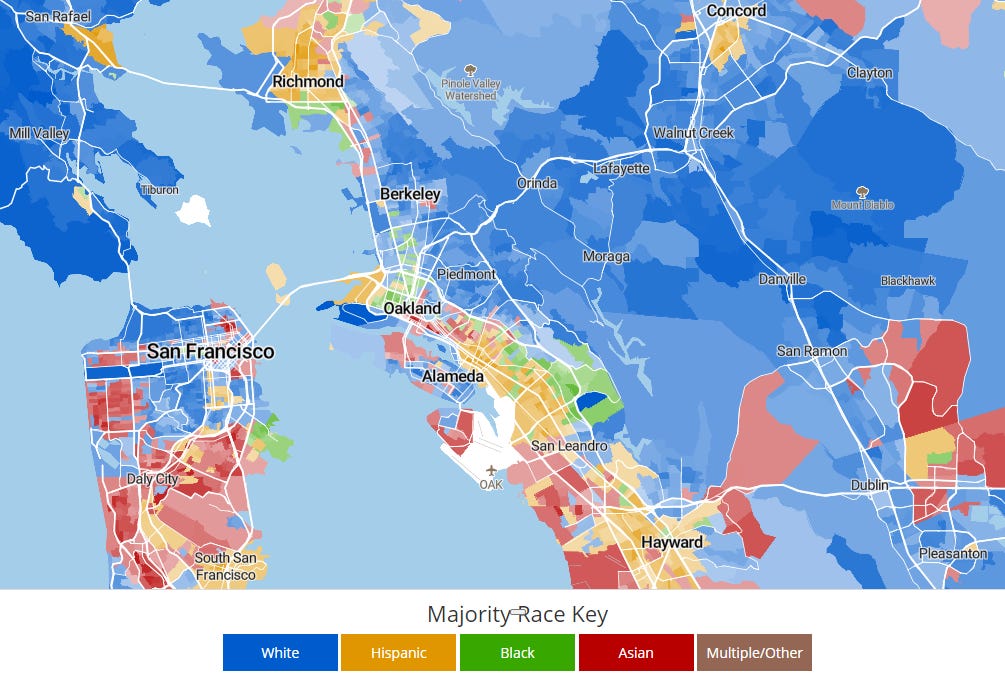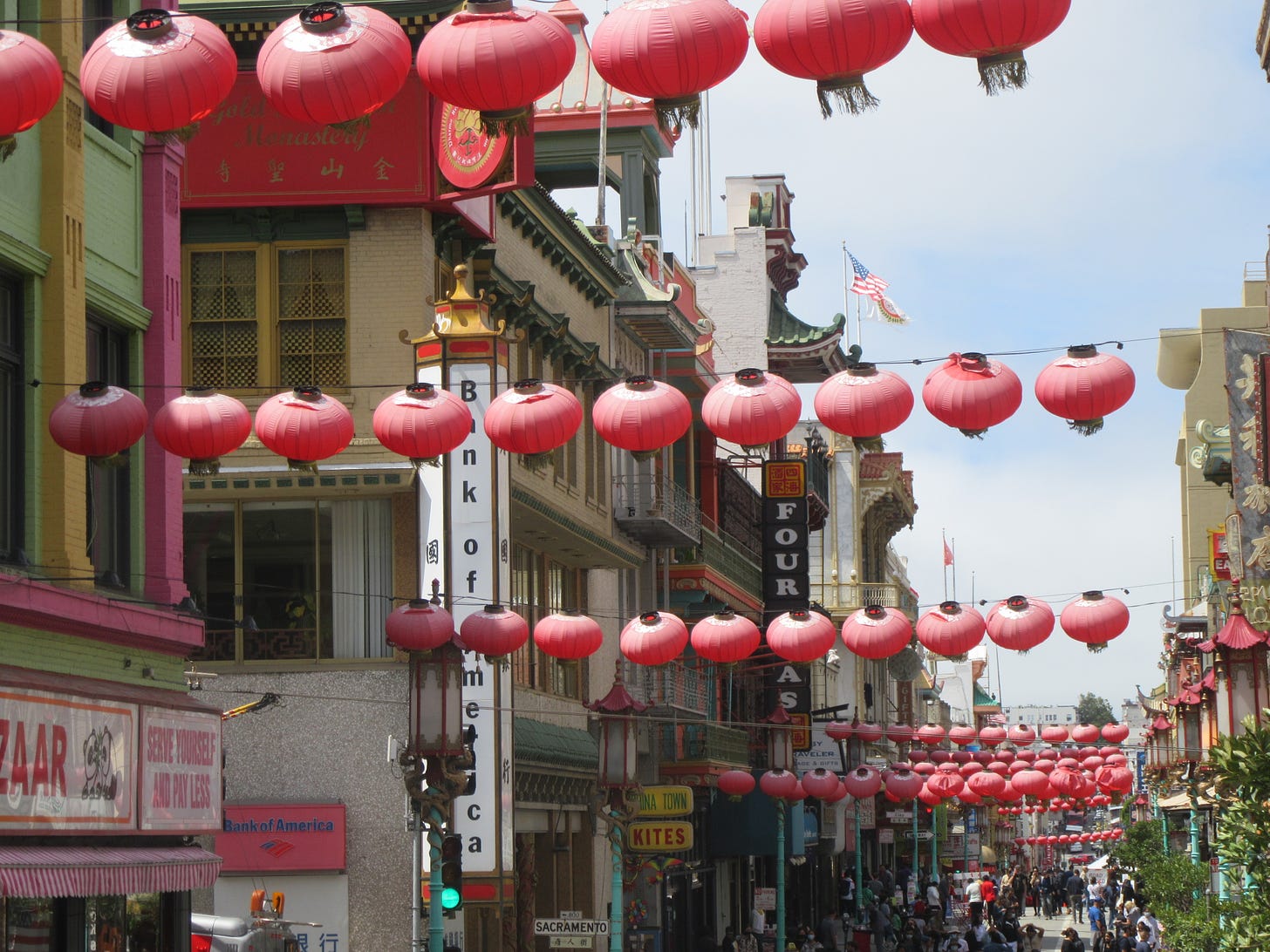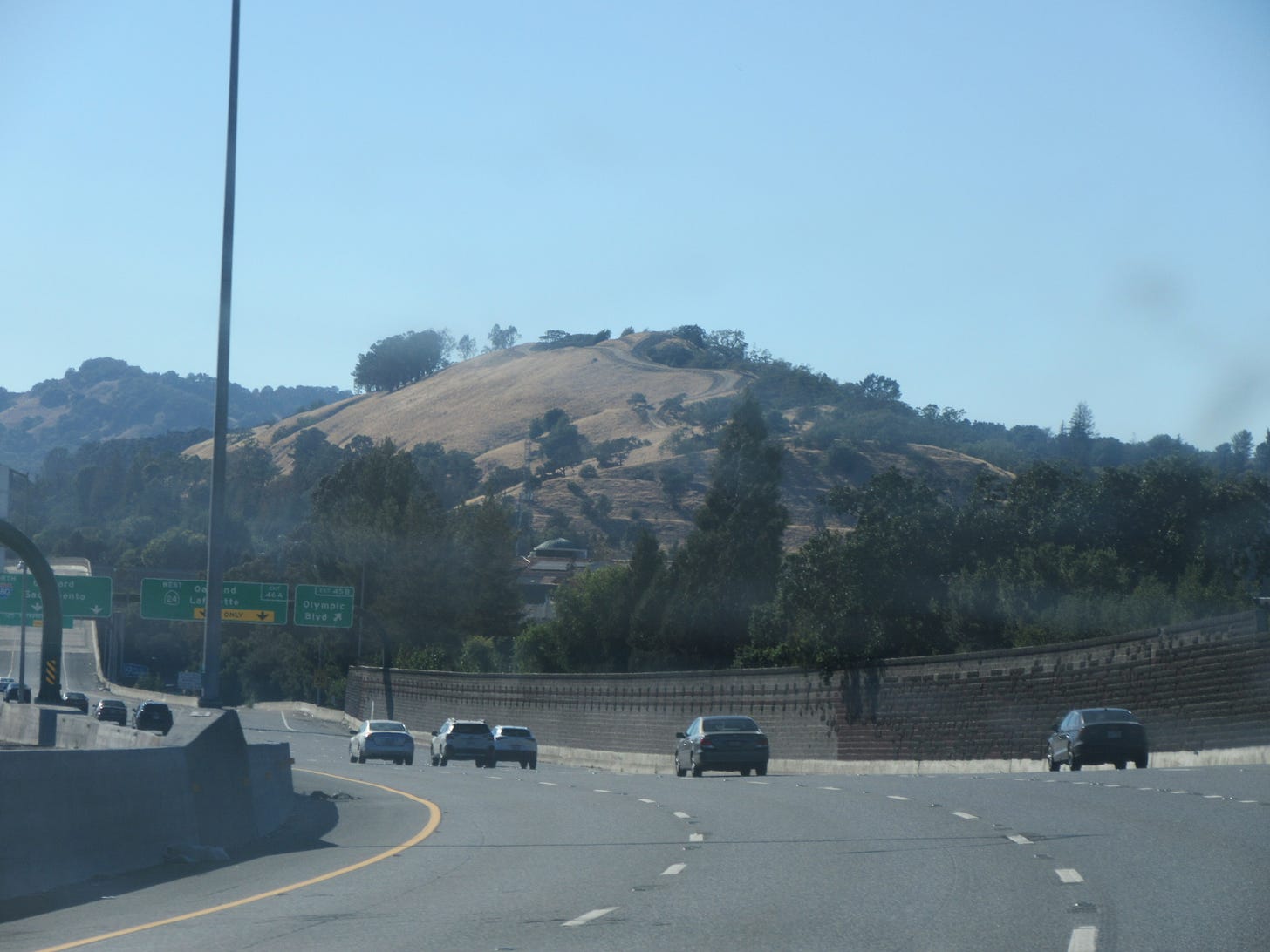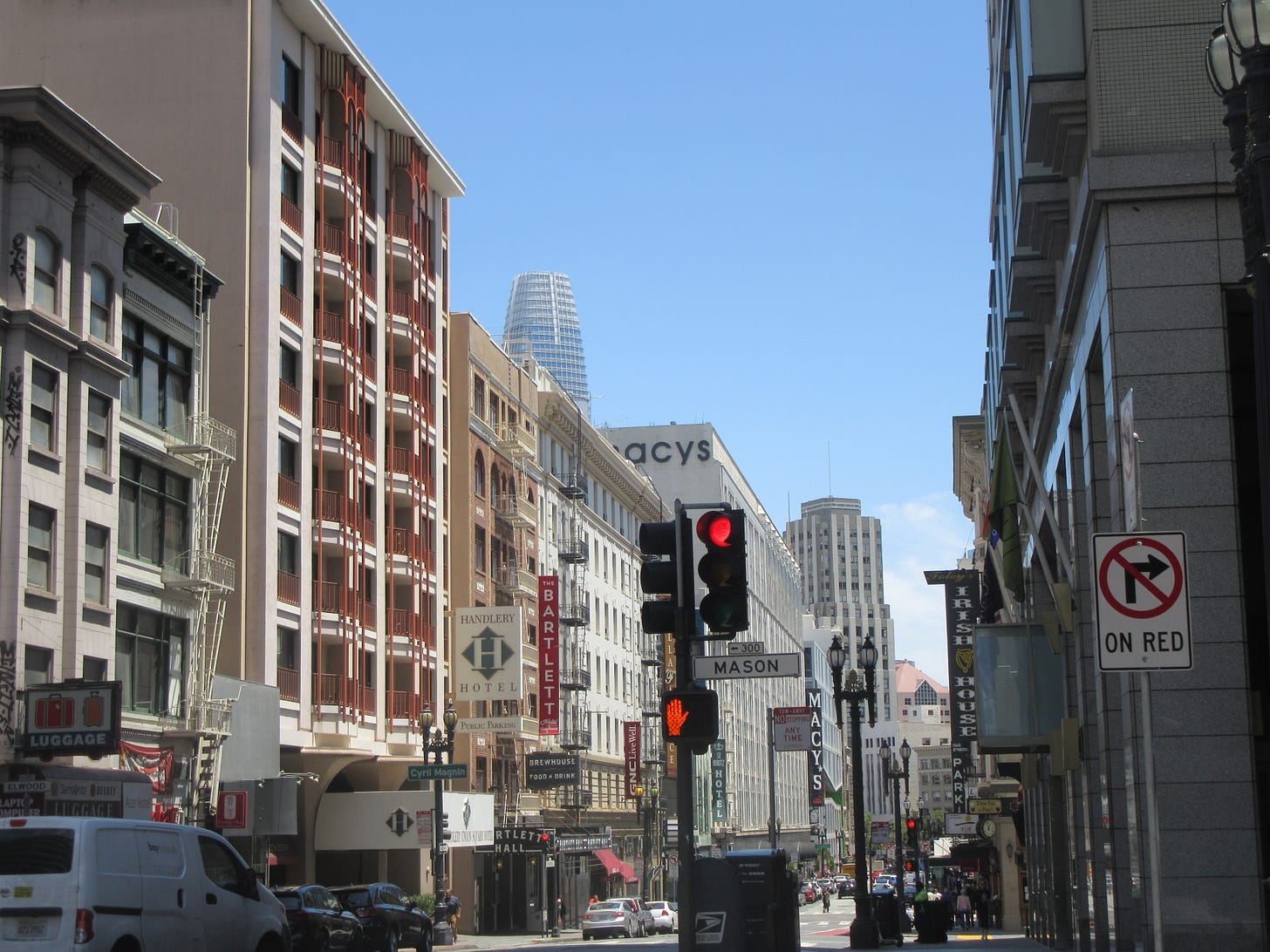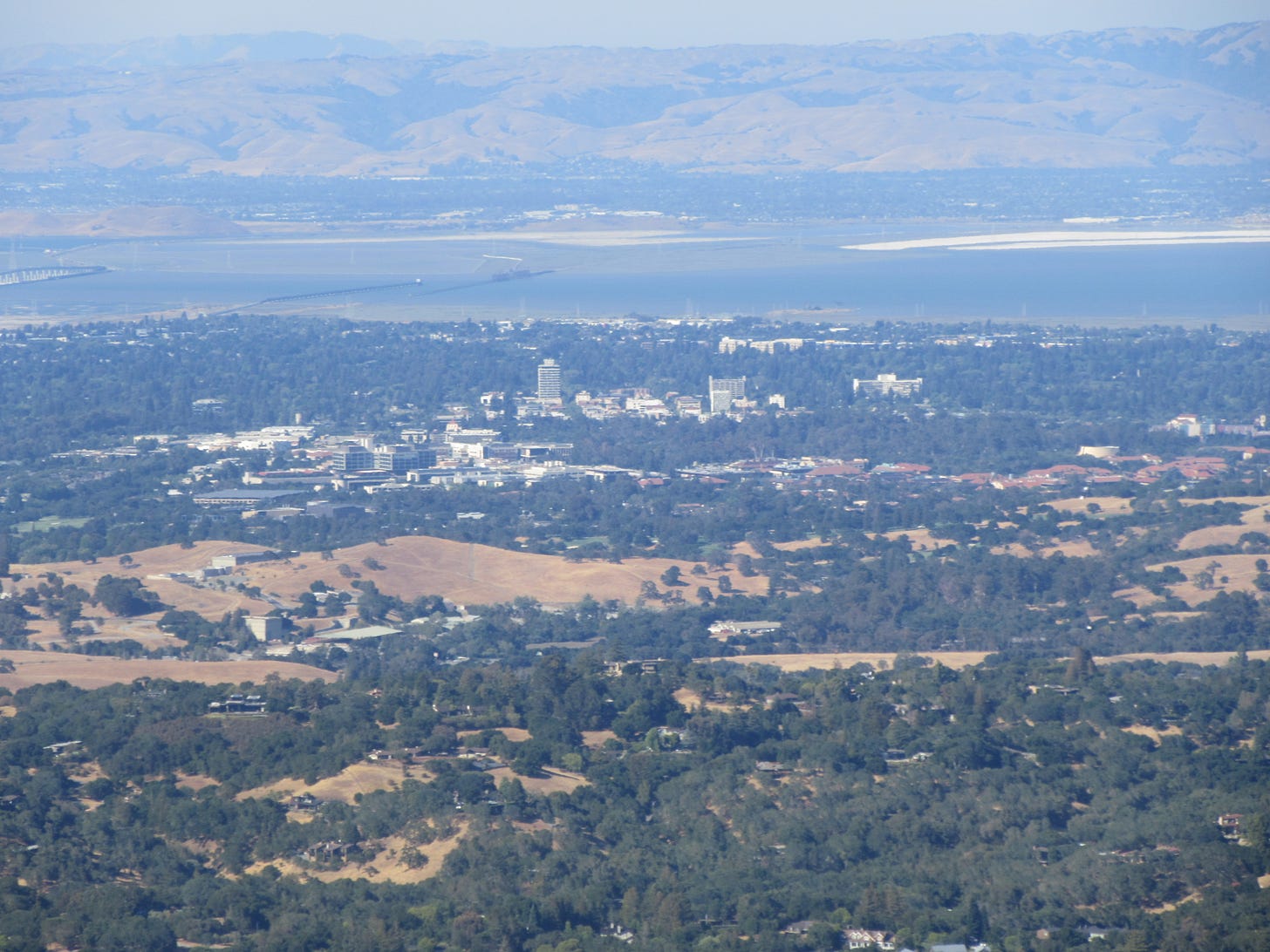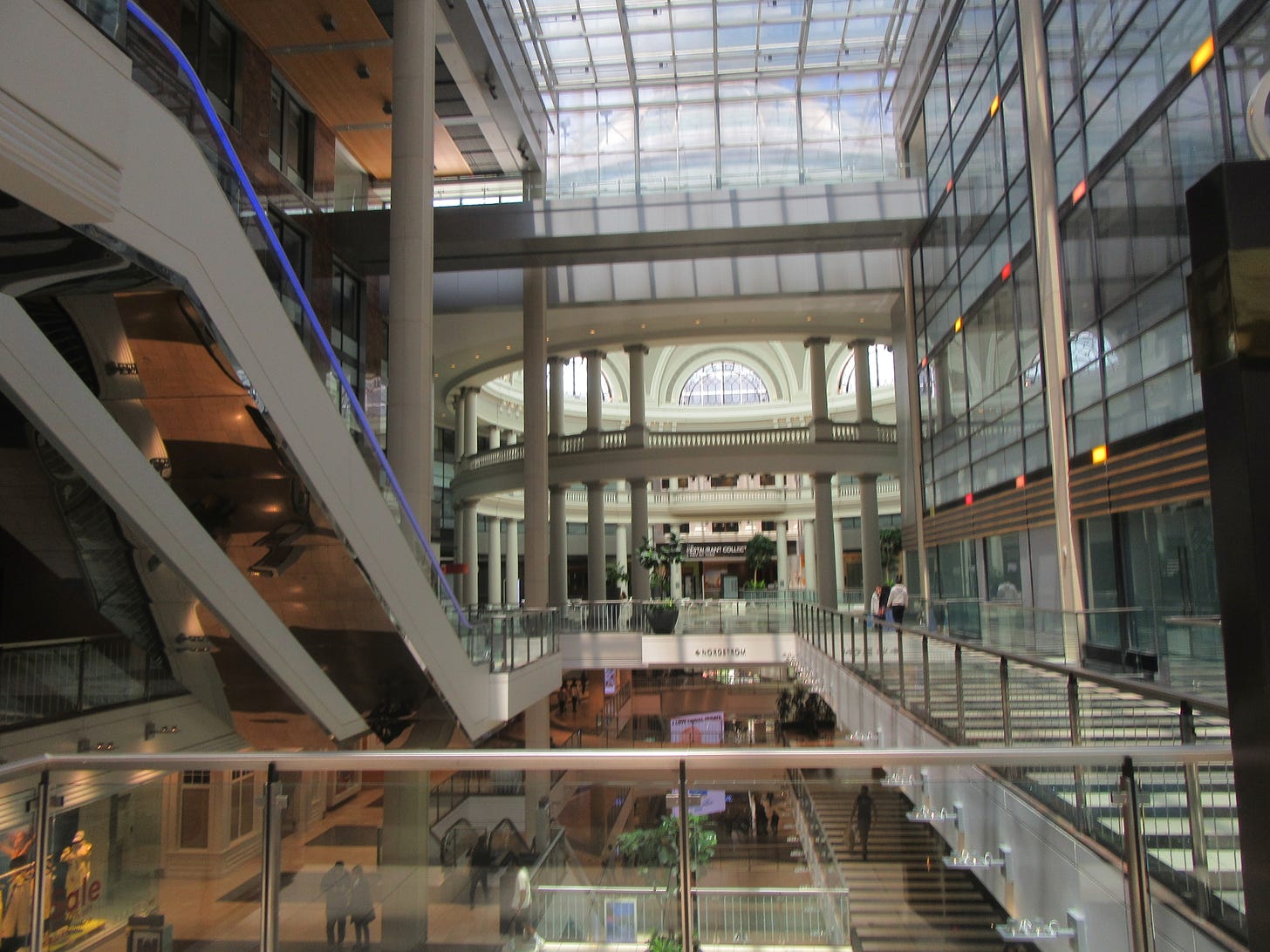A Post-American 4th of July in the Bay Area
I spent the 4th of July Weekend in the San Francisco Bay Area with Matt Pegas (check out his Substack). The trip was short, but I was able to take in enough observations of the region to compare it to past trips. My observations solidify many of my conclusion about California’s demographic, economic, social, and political trends.
Revisiting California’s future of pan-enclavism, my overall observation is nuanced in that we are seeing greater fragmentation but with pockets of diversity, which like with the more homogenous enclaves have their own unique traits rather than being part of one monolithic melting pot. These trends vary throughout the region with the region’s geography of many different cities divided by the physical barriers of the Bay and several mountain ranges forming a sense of a patchwork of pan-enclavism.
Source: Best Neighborhood
The Bay Area is made up of more traditional enclaves such as Chinatown and North Beach/Little Italy in San Francisco but my impression is that Chinatown in San Francisco has declined in favor of more suburban ethnoburbs. These ethnoburbs include Chinese, Vietnamese, and Indian communities throughout the Silicon Valley as well as smaller one’s such as Little Kabul in Fremont, northeast of the Silicon Valley, which will likely grow due to the withdrawal from Afghanistan, symbolic of the grave yard of empires too.
My friend Pilleater has advocated for an identity politics that is a fusion of both Europeans and Asians. This sounds like silly meme culture, but relates to the trend of ethnogenesis where two or more groups merge together creating a new identity. There is a growing Eurasian population in the Bay Area and this ideal serves as a positive alternative to deracinated, rootless cosmopolitanism.
We are seeing this ethnogenesis in the managerial class and at elite universities among Whites and Asians as well as more recent affirmative action beneficiaries. This trend was most noticeable in Palo Alto where there is a diversity among cosmopolitan tech elites that is different than ethnoburbs that serve one particular group. In the Silicon Valley there are company towns where the corporate culture, rather than one ethnic group, creates the enclave. I predict, however, greater fragmentation of the elites into more ethnic and regional based elites due to the failure of centralization, elite overproduction, and divisive racial policies.
You could certainly make the case that the Bay Area is one the first post-American regions in the United States and there is a sense that we are entering a Post-American era with the degree of visible patriotism and other signifiers of community identity varying from city to city. For instance in South San Francisco, which is largely middle-class and extremely diverse with the largest ancestry groups being Mexican and Filipino I saw more American flags than in the more economically unequal San Francisco and in very affluent Palo Alto where rainbow flags and BLM signs are preferred. My observation from a 4th of July gathering at a Church in South SF was that it was very diverse but the kind of high trust, close knit community one would expect to find in the Midwest. Religion plays a huge role in building social capital.
An area that stands out in feeling the most traditionally American is Danville whose downtown was deserted on 4th of July, a sign of greater patriotism. Danville is fairly wealthy and White but also more culturally insular from San Francisco and the Silicon Valley. Danville is part of the broader Central Contra Costa County region which includes Walnut Creek and Lamorinda and is one of the most idyllic suburban regions in California, far removed from the problems of urban decay, with low crime and good schools. This area is also more politically moderate and family oriented than the other well-off White demographic strongholds such as Marin and the Peninsula. In my article on pan-enclavism I make the case that these majority White suburbs in minority White urban metros are beginning to function as ethnoburbs in their own right.
Despite my criticisms of Americanism, American patriotism still functions as a sort of identity politics for both White Californians as well as the Middle Class of diverse backgrounds. This identity in California functions as a place holder and it will be interesting to see what kind of identity evolves out of it in a Post-American future. The best case scenarios for California’s future could either be a multi-racial middle class coalition made up of Whites, Latinos, and Asians as a counter-balance to the top down alliance, a Euro-Californian identity that takes part as part of a multi-culturalism inclusive of all, or a hybrid of both.
There is a case to be made for Calexit, as America is broken and divided, but California Nationalism needs a greater ideological foundation and is still a relatively small movement, despite its growth, and in the short-term American patriotism function as symbolic opposition to the Democratic clique that runs California. I put forth an Alternative Vision for California that is oriented towards California’s unique issues with the core principles being that true freedom is being able to live in the kind of community that serves one’s needs and desires. The vehicle I suggested to create such communities I called pan-enclavism: a specialization-based politics and economics to address the specific needs of every group and individual, embracing a spirit of radical creativity as what defines California Exceptionalism. The prospect of a Calexit, however, bonks its head on the reality that California is a one-party Democratic stronghold, that California’s Democratic Party is extremely corrupt but lacks any viable alternative, the overall institutional power of neoliberalism, and that the exodus acts as a safety valve for discontent.
Despite being a democratic stronghold, there is political nuance in the Bay Area from looking over my in-depth analysis of California Election results, and from my observations and talks with my contacts in the area. For instance looking at areas that are wealthy and White that border each other, we have Portola Valley which is more woke vs. nearby Woodside which is more moderate and the woke Berkeley Hills vs. the more moderate Piedmont. These nuanced cultural and political traits of areas are also a form on enclavism.
Another trend I’ve noticed in the wealthier communities of both the Bay Area and Southern California is a rapid ageing of the population, especially notable over the past decade as boomers reach retirement age. For instance in Los Angeles, the City of LA Draft Housing Element Study found that the greatest population decline was in the wealthiest single family home areas and a dramatic decline in the number of children, teenagers, and young adults, while the senior population has grown the most. It is interesting to speculate upon the demographic futures of these wealthy communities that are rapidly ageing.
There are many factors including the failure to pass down inter-generational wealth and a crisis of declining fertility among the middle class and well-off, taxation policy, the lack of new housing, and how those who bought into coastal California real estate in the 70s and 80s basically won the lottery. There is also a radical individualistic mentality embraced by well-off boomers in California, and society at large, that lacks a future oriented vision. These demographic trends go beyond the left’s legitimate concerns about income inequality and bring up questions about the values of the elites and what traits are incentivized by a society beyond the equity vs. free market/individualism debate.
Demographic trends are largely impacted by relocations and there is a perception that the pandemic has exacerbated the exodus out of California and the Bay Area in particular. However, a recent survey “conducted by UC San Diego found that the percentage of people wanting to leave California has stayed "static" over the past two years,” but “ that Spanish speakers, Latino, African American, Asian American and younger residents tend to be more optimistic about the dream, while older, white, middle class and Republican residents tend to be more pessimistic.” Overall this study found that most relocations have been within California and that those looking to leave the State are primarily middle income but not so much among the wealthy. The likelihood of a hybrid remote work model will likely cause more relocations to the suburbs and exurbs rather than out of the region altogether and the Silicon Valley office market appears to be recovering from its coronavirus-linked ailments.
The pandemic has been an impediment for Urbanism, especially in San Francisco which has had high level office vacancies and the cancelation or pausing of major developments such as the very impressive skyline altering Oceanwide Center. Overall high rise development is shifting towards San Jose, which has traditionally been very suburban with Google’s Mega Development West of Downtown San Jose. I have mixed feelings about the Google development in that it is great for urbanism but also increases the monopoly power of big tech over these company towns.
The overall pandemic trends seem to encapsulate what French writer Michel Houellebecq said, “same but worse” in his predictions about the post-pandemic world but the pandemic has sort of sped up time, exposing a lot of deep social problems. San Francisco and many other urban areas are in decline, and I noticed signs of urban decay such as store closures and growing homelessness. Overall though it was not as bad as I anticipated despite the smash and grab heist at the Neiman Marcus on Union Square, where Matt and I sampled men’s perfume, and the July 4th chaos in Oakland that same day, which we drove past on the highway heading toward Central Contra Costa to enjoy the tranquility of nature.
Overall I felt relatively safe walking around San Francisco, even in the sketchier areas such as the periphery of the Tenderloin and the Mission District where we observed a minor altercation at the BART station between a patron and staff. What I did notice was a lot less foot traffic in San Francisco, besides the crowds of tourists, and that the homeless presence stands out more in contrast to less pedestrians overall. I did see human waste on the ground in the financial district. This urban decay including the homeless crisis and rise in crime is both part of the economic fallout of the pandemic and failure to build affordable housing but also a failure of urban liberal politicians in excusing and promoting bad behavior.
Despite these problems, Bay Area rental prices are starting to rebound and single family homes are selling over the asking price. The NIMBY vs. YIMBY debate is as relevant as it was before the pandemic and while much of the Bay Area is still very restrictive, in Berkeley the YIMBY left has used moral blackmail to call out older well off NIMBYs on their hypocrisy. This has paid off and the long NIMBY stronghold has abolished single family zoning on racial justice grounds.
While there are valid arguments for historic and wilderness preservation what stands out in especially the Silicon Valley is the immense under-utilization of property. For instance in Palo-Alto which has some of the nation’s most desirable real estate, rivaling Manhattan, and has the worst job to housing ratio of any major Bay Area City, much of the city’s core is extremely underbuilt filled with bland low rise office parks for Venture Capital.
In the Bay Area there is immense symbolism to be found in its architectural and urban aesthetics with the theme of downplaying wealth in residential and commercial properties being the essence of late capitalism, but there is also a more utilitarian rather than aesthetic component in the tech industry which dominates the economy.
San Francisco has great Interior Urbanism from the San Francisco Shopping Center to the Embarcadero Center and these self-contained urban structures date back as a response to the past era of urban decay in the 70s and 80s, being closed off to street life and functioning as an urban oasis. This was a positive vision that came out of that era of urban decay but what we are seeing is a new wave of privatization of public spaces and an overall decline in public spaces.
What is redeeming about the San Francisco Bay Area is the wide variety of experiences on can have. It is one of the few American urban metros that has access to both urbanism and wilderness with an extensive network of greenbelts. There is a theme of contradictions, such as the ideal of true diversity and true freedom in that many groups can find their niche or tribe. For instance the region is the center of the futurist scene with immense intellectual capital in culture and innovation, but the region also epitomizes some of the worst characteristics of neoliberalism as a hub of the incoming techno-feudalist order. The Bay Area has terrible political leadership but many great attributes, it serves as a microcosm for many social issues, and it’s also important to point out that the media reports of decay impact specific places but not the region as a whole which is practically a nation onto itself.



